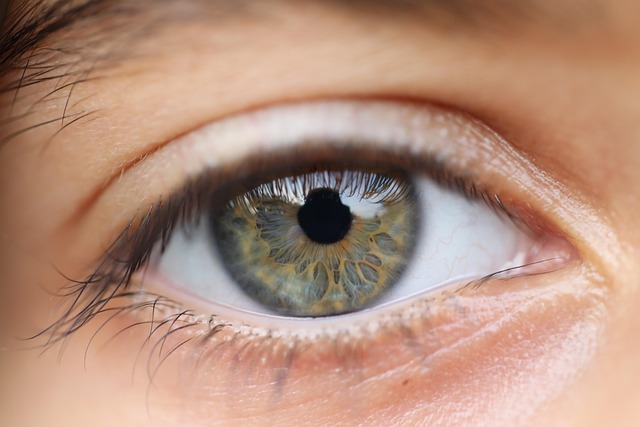Practical environmental and screen adjustments to minimize glare and haze
Everyday environments and device displays can worsen blurred vision by introducing glare, reflection, and diffuse haze. Small, intentional adjustments to lighting, monitor settings, and workspace layout can improve sight and visual comfort for people experiencing changes in acuity. This piece outlines practical steps grounded in optical principles and clinical screening considerations to reduce visual disturbance indoors and while using screens.

Practical environmental and screen adjustments to minimize glare and haze
Modern life places many eyes in front of screens and under mixed lighting, which can increase blur, glare, and a feeling of haze. Addressing the immediate environment and display settings can preserve functional sight and reduce eyestrain while longer-term diagnostics and rehabilitation proceed. The strategies below focus on optical factors, practical setup tips, and how clinical imaging or screening may guide individualized adjustments.
This article is for informational purposes only and should not be considered medical advice. Please consult a qualified healthcare professional for personalized guidance and treatment.
How glare affects sight and visual acuity
Glare occurs when excessive light or reflections enter the eye and scatter across the cornea or lens, reducing contrast and perceived acuity. Both direct glare (bright light sources in the field of view) and veiling glare (reflections that create a diffuse wash) can simulate or worsen blurred vision. Minimizing high-contrast reflections, using matte surfaces, and positioning light sources off-axis from the line of sight help preserve retinal image quality. Simple measures such as angling glossy documents and adjusting overhead lighting can lower the impact of glare on everyday tasks.
Optical and refraction considerations
Correcting refractive error is a fundamental step when managing perceived haze or blur. An up-to-date refraction and optical prescription addresses myopia, hyperopia, astigmatism, or presbyopia that contribute to reduced acuity. Anti-reflective coatings and lens tints tailored to an individual’s needs can decrease reflections and enhance contrast. For digital work, occupational lenses that account for intermediate viewing distances and appropriate vertex distance can reduce accommodative strain and improve comfort during prolonged screen use.
Retina, cornea, and haze connections
Conditions affecting the cornea or retina can produce persistent haze or reduced contrast even after optical correction. Corneal irregularities, tear-film instability, or early lens opacities scatter light at the anterior segment, while retinal issues can reduce image clarity at the back of the eye. Environmental steps that improve surface hydration—regular breaks, humidity control, and appropriate blink reminders—can reduce corneal scatter. When haze persists despite environmental control, targeted ophthalmology imaging and evaluation of the retina and cornea are important for accurate diagnosis.
Screen setup to reduce eyestrain and glare
Positioning and configuring screens reduces reflected light and subjective haze. Place displays perpendicular to windows or use window coverings to avoid direct sunlight on the screen. Lower screen brightness to match ambient light and increase contrast modestly to improve legibility; use larger font sizes and adequate line spacing. Enable blue-light filters or warm color profiles in low-light conditions only if they enhance comfort. Consider anti-glare screen protectors and matte-finish monitors to minimize specular reflections. Ergonomic positioning—top of screen at or slightly below eye level and 50–70 cm distance—also reduces accommodative demand and eyestrain.
Diagnostics, imaging, and ophthalmology screening
If environmental adjustments do not meaningfully reduce blur or haze, timely diagnostics are essential. Comprehensive screening in ophthalmology can include refraction, slit-lamp examination, and imaging such as OCT or corneal topography to evaluate the retina and cornea. Imaging helps differentiate anterior segment scatter from posterior segment pathology, guiding targeted rehabilitation or medical treatment. Documenting symptoms, task timing, and screen exposure patterns supports efficient triage and helps clinicians interpret imaging findings within the context of daily visual demands.
Rehabilitation and neurology-related measures
For individuals with neurologic causes of blurred vision or post-injury visual complaints, rehabilitation approaches complement environmental changes. Vision therapy, prism correction, or tinted overlays may be applied based on assessment by low-vision or neuro-ophthalmology specialists. Rehabilitation focuses on improving functional performance—reading, screen work, and navigation—by combining optical aids, adaptive strategies, and workspace modifications. Coordination between optometry, ophthalmology, and neurology is often beneficial when symptoms involve complex visual processing or concurrent neurologic conditions.
Conclusion
Reducing glare and haze is often an effective first step when addressing blurred vision complaints. Practical interventions—optimizing lighting, adjusting screen settings, ensuring correct refraction, and maintaining ocular surface health—can yield noticeable improvements in comfort and functional acuity. When symptoms persist, diagnostic imaging and screening in ophthalmology or neurology-informed rehabilitation provide a pathway to targeted treatment. Integrating environmental changes with clinical evaluation supports safer, more comfortable visual performance in daily life.






